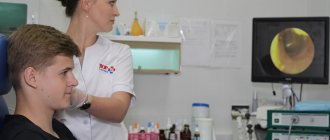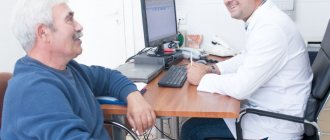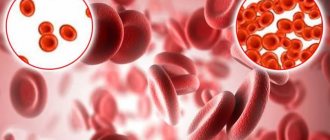Rett syndrome, what is it? Causes and treatment
Rett syndrome is a progressive degenerative disease of the central nervous system, named after the scientist who first described this pathology.
The syndrome is diagnosed during the first 2 years of a child’s life, and it usually occurs in children with normal pregnancy, childbirth and full development in the first months of life (sometimes up to 1.5 years). Then development stops and regression of all forms of mental activity occurs, which is accompanied by the emergence of autism, motor stereotypy, and progressive motor decline. Subsequently, this disease leads to disability and even death.
The main manifestations of the disease are the reverse development of already acquired motor and speech skills between the ages of 1.5 and 3-4 years, repeated stereotypical and uncontrolled hand movements, and mental retardation.
What it is?
Rett syndrome is a psychoneurological hereditary disease, occurs almost exclusively in girls with a frequency of 1:10,000 - 1:15,000, and is the cause of severe mental retardation in girls.
The disease was first described by the Austrian neurologist Andreas Rett in 1966. The child’s development proceeds normally until 6–18 months, but then the girl’s acquired speech, motor, and subject-role skills begin to disappear.
This condition is characterized by stereotypical, monotonous movements of the hands, rubbing and wringing of the hands, which are not of a purposeful nature. Speech becomes difficult, responses become monotonous or echolalic, and at times speech completely disappears (mutism).
Prognosis and life expectancy
The prognosis is not favorable, since the syndrome is guaranteed to lead to severe mental retardation and other disorders. Patients with the syndrome can live up to 40-50 years, provided that maintenance therapy is provided.
The cause of a short life span is often sudden cardiac death. In addition, about a third of patients have defects of internal organs, which also becomes an unfavorable factor. There is a high risk of respiratory or multiple organ failure, stroke, intestinal necrosis, and cerebral edema.
Causes
In the 90s, there was a hypothesis that Rett syndrome is a specific disorder that is associated with gene mutations localized on the X chromosome; caused by a dominant trait and in boys cannot be combined with life. Subsequently, the transmission of the mutant gene by the father's X chromosome was confirmed by the fact that this hereditary pathology can very rarely occur in boys, since they receive the Y chromosome from their father. That is why, with the family type of inheritance of Rett syndrome, boys in such families are born practically healthy.
Currently, there is evidence of the hereditary nature of the disease. The genetic cause of Rett syndrome is associated with an altered X chromosome and mutations that occur in genes that regulate the replication process. In this case, there is a deficiency of certain proteins that regulate this growth, and their cholinergic function is also impaired.
Rett syndrome has been hypothesized to be a developmental disorder characterized by a deficiency of neurotrophic factors. Thus, the basal ganglia, lower motor neurons are affected, and the spinal cord and hypothalamus are involved. Analyzing morphological changes, scientists came to the conclusion that there is a slowdown in brain development from birth, which completely stops growing by the age of four. And also in such children there is a slowdown in the growth of the body and some somatic organs.
Duchenne muscular dystrophy
Duchenne muscular dystrophy is a rare genetic disorder characterized by progressive muscle weakness followed by muscle atrophy. Affects approximately 1 in 3,500 male newborns (girls are extremely rarely affected). It is usually diagnosed between 3 and 5 years of age, although initial symptoms may be noticed in younger children when they begin to attempt to sit or walk on their own.
First, there is weakness and atrophy (those closest to the body) of the proximal muscles - legs, pelvis, arms, shoulders. At the same time, other muscle groups may increase in volume (for example, calf muscles). It is difficult for a child to sit or stand without assistance; when walking, he seems to shift from one foot to another; it is difficult for him to climb stairs, get up from a sitting position, and he often falls. Improvement is often noticeable between 3 and 5 years of age, but this may be due to natural growth and development.
As the disease progresses, muscle weakness and muscle atrophy spread to the legs, forearms, neck and trunk. Progressive curvature of the spine (scoliosis, lordosis), atrophy of the femoral muscles, and persistent limitations in joint mobility (contractures) may be observed. By adolescence, most patients are unable to move independently. They have reduced bone density, an increased risk of fractures, and may experience a variety of cognitive impairments, including learning disabilities, attention deficit disorder, and autism spectrum disorder. By late adolescence, life-threatening complications can develop, including heart disease (cardiomyopathy) and respiratory disease due to weakening of the chest muscles and increased susceptibility to respiratory infections (pneumonia, respiratory failure). Impaired gastrointestinal motility can cause constipation and diarrhea.
Duchenne muscular dystrophy is a disease with an X-linked recessive type of inheritance, i.e. it is associated with a gene defect (in this case the DMD gene or the dystrophin gene) located on the sex X chromosome. The DMD gene regulates the production of the protein dystrophin, which is believed to play an important role in ensuring the integrity of cell membranes in cardiac and skeletal muscle cells. A mutation in the DMD gene leads to dystrophin deficiency, which in turn causes muscle fiber degeneration. Most boys inherit the abnormal gene from their mothers, but in some cases, Duchenne muscular dystrophy develops sporadically, as a result of a spontaneous mutation of the DMD gene.
The diagnosis is made based on clinical signs of the disease, studying the patient's medical history and conducting special studies, including molecular genetic testing. Using a biopsy of muscle tissue, changes in muscle fibers characteristic of DMD and the level of dystrophin protein in muscle cells and myocytes are determined (immunohistochemical study). Laboratory tests (blood tests) are also necessary - in DMD, there is an increased level of the enzyme creatine kinase. Additional methods for diagnosing the patient’s condition are assessing the activity of the heart, respiratory and muscular systems, and bone density.
Treatment for Duchenne muscular dystrophy is symptomatic and supportive, including physical therapy, exercises to build muscle strength and prevent contractures. Some patients require surgery to treat contractures or scoliosis. Orthopedic devices are aids for independent walking (walkers, shin braces). A patient who can no longer move independently needs a wheelchair.
Corticosteroids (prednisone, deflazacort) are the standard of care for patients with DMD; they slow the progression of muscle weakness and delay the loss of the ability to move independently by 2–3 years.
In 2021, the US Food and Drug Administration (FDA) approved the exon 51 skipping drug eteplirsen (injectable) for the treatment of DMD in patients with a confirmed skippable dystrophin gene mutation (approximately 13% of all patients). exon 51. In 2019–2020. The FDA has approved 2 drugs (golodirsen, viltolarsen) for patients with a confirmed dystrophin gene mutation that is susceptible to exon 53 skipping (approximately 8% of patients). In 2021, the drug casimersen received approval for patients with a confirmed dystrophin gene mutation that is susceptible to exon 45 skipping (approximately 8% of patients).
Stages of development
Rett syndrome develops over a long period of time, so the disease is usually divided into several stages depending on the deterioration of the patient’s condition:
- Stagnation is a temporary suspension of the disease, in which there is no increase in symptoms. Lasts from 6-18 months or more. The child loses interest in surrounding events, muscle hypotonia, and slower growth of the head and limbs are noticeable.
- Deterioration of condition. The stage lasts from 1 year to 3-4 years. If a child has mastered the skills of speech and movement, they gradually disappear. Stereotyped hand manipulations, disturbances in the pulmonary system (hyperventilation, shortness of breath, sudden cessation of breathing), incoordination of movements, and unmotivated anxiety appear. Already at stage 2, convulsive seizures appear, the treatment of which is not effective.
- Relative stability, this stage can continue until early school age. Mental insufficiency, convulsions, low weight gain, and impaired emotional contact with others are noted. Epileptic seizures are replaced by inhibition of the nervous system.
- The final stage is characterized by a decrease in the frequency of seizures, but cachexia, scoliosis, and severe respiratory problems appear. Inability to move is possible; short stature of the limbs and small head circumference are determined.
The characteristic symptoms inherent in a particular stage are not one hundred percent arbitrary and may vary depending on the transience of the disease and individual clinical cases.
Interstitial lung diseases in children
Interstitial lung diseases in children are a heterogeneous (heterogeneous) group of rare lung diseases in infants, children and adolescents. Their development leads to disturbances in gas exchange and ventilation function of the lungs, diffuse changes in the interstitial tissue of the lungs.
IPDs that are more common in infancy include congenital surfactant dysfunction associated with mutations, acinar dysplasia, congenital alveolar dysplasia, alveolar-capillary dysplasia with a violation of the location of the pulmonary veins, alveolar growth abnormalities, neuroendocrine hyperplasia, pulmonary interstitial glycogenesis.
The following IPDs occur in children over 2 years of age and adolescents: idiopathic interstitial pneumonia (nonspecific interstitial pneumonia, desquamative interstitial pneumonia, cryptogenic organizing pneumonia, lymphocytic interstitial pneumonia); alveolar hemorrhage syndromes, aspiration syndromes, hypersensitivity pneumonitis, follicular bronchiolitis, eosinophilic pneumonia, alveolar proteinosis, lymphangioleiomyomatosis, lymphangiectasia, hemangiomatosis; pathologies associated with systemic diseases (pulmonary sarcoidosis, lung lesions due to scleroderma, pulmonary histiocytosis, lung diseases caused by malignant neoplasms); immune-mediated lung diseases; lung diseases associated with a weakened immune system.
The reasons why interstitial lung disease may develop in children are in many cases unknown. Conditions or factors that may influence the occurrence of IPD include inherited conditions (congenital surfactant disorders), congenital conditions that cause changes in lung structure and function, aspiration syndromes, various immune system disorders, environmental exposures, and some cancer treatments. (chemotherapy, radiation therapy), systemic or autoimmune diseases, family history of IPD.
Because IPD comes in many forms in children, signs and symptoms may vary. The main symptoms include: rapid shallow breathing (tachypnea), respiratory failure (respiratory distress syndrome), low levels of oxygen in the blood (hypoxemia), intermittent cough, wheezing with crepitus (crackling, crunching, clearly distinguishable when listening to the lungs), shortness of breath during exercise (while eating in infants), slow growth, inability to gain weight, recurrent pneumonia or bronchiolitis.
The diagnosis of IPD in children is established on the basis of medical history, family history, results of laboratory (including genetic) and instrumental studies (chest x-ray, CT), pulmonary function tests; an important criterion for making a diagnosis is the exclusion of other diseases with similar symptoms . If the diagnosis does not provide complete information, the doctor may recommend a lung biopsy followed by histological examination.
A pulmonologist treats interstitial lung diseases in children.
Since IPD in children is a rare disease, due to insufficient research on both individual forms of the disease and the group as a whole, there is no effective therapy. The modern approach to treatment is based on the use of symptomatic and supportive therapy to help reduce symptoms and improve the patient’s quality of life, maximize conditions for normal growth and development, and prevent the development of preventable diseases that can seriously worsen the child’s condition.
Supportive treatment includes oxygen therapy; medications (bronchodilators - drugs that relax the smooth muscles of the bronchi, expand their lumen and eliminate bronchospasm); establishing nutrition that promotes weight gain and normal growth of the child; sputum removal devices; NIV and ventilator devices; pulmonary rehabilitation.
Symptomatic treatment includes corticosteroids, which help reduce inflammation in the lungs; antibiotics to treat infection; drugs to prevent acid reflux, which is dangerous due to aspiration, and others. Lung transplantation is currently the only effective treatment for patients with life-threatening conditions such as alveolar capillary dysplasia and surfactant dysfunction caused by certain gene mutations.
It is important to take measures to prevent diseases (primarily infectious) that can worsen the child’s condition: wash your hands; stay away from people with cold symptoms; Discuss with your pediatrician a vaccination plan not only for the child, but also for those around him; talk to your doctor about how to protect your child from respiratory syncytial (viral) infection, which can cause cold and flu symptoms in healthy people, but can seriously worsen the condition in a patient with IPD; Avoid exposure to polluted air, tobacco smoke, and other substances that irritate the lungs.
Symptoms of Rett syndrome
Separately, attention should be paid to the main symptoms by which Rett syndrome is determined, since in medical practice there have been cases where, due to an incorrect interpretation of the signs of the disease, a completely different diagnosis was made, which ultimately led to a rapid death.
Rett syndrome is defined by the following criteria:
- Pronounced microcephaly. In the period after birth, the child has a normal ratio of the size of the head to the body. Gradually, head growth slows down, which is caused by a decrease in brain size.
- Developing scoliosis. Spinal disorders are typical for all children suffering from this disease. The cause of back curvature is muscle dystonia.
- Mental development. Rett syndrome is characterized by profound mental retardation and a lack of rich cognitive activity, which is usually present in all young children. Many patients initially acquire the skills of speaking and perceiving the world around them, but over time they completely lose them. The child has a noticeable absence of any expressive or impressive communication with the environment. To determine disorders in mental development, specialists use standardized psychological tests.
- Specific hand movements. Children lose the ability to hold any objects, be it a toy or a bottle of milk. In this case, monotonous hand movements occur, reminiscent of washing under a tap, and are also characterized by squeezing, fingering, clapping at chest level, face and behind the back. The patient may also suck or bite his hands, or randomly hit himself with them on different parts of the body.
- Convulsive seizures. In almost 80% of cases, girls suffer from epileptic seizures, which are also accompanied by partial seizures, drop attacks, and tonic-clonic type of seizure. Rett syndrome is characterized by the following signs of the formation of a pre-seizure state: tremors, difficulty breathing, sudden movements, gaze directed at one point with complete numbness of the body. These symptoms are often treated with anticonvulsants, but such drugs do not provide any positive effect, since the listed symptoms do not belong to the group of convulsive diseases, but represent only Rett syndrome.
- Neurochemical symptoms. In a study of patients who died with severe Rett syndrome, scientists determined that their brain sizes were either 12% or 24% smaller than normal, depending on the patient's age group. In the cerebellum, cerebral cortex and dorsal ganglia, neuronal deficits and gliosis were observed, as well as reduced levels of pigmentation. According to morphological studies, by the age of four, people suffering from Rett syndrome were diagnosed with a complete stop in brain development and slower growth of other organs and parts of the body.
Consequences and complications
Against the background of reduced intelligence, other complications arise in children. Scoliosis appears due to muscle weakness. Subsequently, the resulting curvature of the spine will compress the lungs, which will cause poor ventilation.
A sedentary lifestyle and frequent dehydration provoke constipation, which can lead to intestinal blockage and unbearable pain.
If you have difficulty swallowing saliva and increased intra-abdominal pressure, there is a risk of gastroesophageal reflux (reflux of stomach contents back into the esophagus), which will lead to inflammation of the esophagus and respiratory infections.
There is a high risk of losing the ability to walk.
Diagnostics
A consultation with a psychiatrist begins with a medical history. During a conversation with parents, the specialist finds out:
- whether pregnancy and childbirth proceeded normally;
- how the child developed during the first 6–18 months;
- what is the dynamics of head growth;
- when the child began to lose acquired skills;
- whether the patient has stereotypical hand movements, seizures, speech, breathing, gait and coordination disorders, delayed psychomotor development.
For an accurate diagnosis, the doctor often prescribes additional examinations:
- EEG (electroencephalogram), which measures the bioelectrical activity of the brain (a slow background rhythm is evidence of a mutation in the X chromosome);
- CT scan of the brain, which can detect changes indicating cessation of brain development;
- Ultrasound of internal organs, giving an idea of the degree of their development.
Without testing data, Rett syndrome may be confused with autism. Both of these conditions are characterized by:
- decreased learning ability;
- loss of speech;
- lack of control over the pelvic organs;
- withdrawal from the outside world;
- lack of eye contact;
- reluctance to make emotional and social contact;
- disturbance of body sensitivity;
- causeless screaming and crying.
You can distinguish one disease from another using differential diagnosis, developed in 1988 at the International Conference on Rett Syndrome.
Differential medical diagnostic data:
| Symptom Description | Manifestation in Rett syndrome | Manifestation in early autism |
| Slow growth of hands, feet and head | A characteristic symptom of Rett syndrome | No sign |
| Developmental delay between six months and one year of age | Doesn't appear | Often observed |
| Respiratory disorders | Often observed | Do not appear |
| Stereotypical hand movements | Repeated monotonous hand movements in the waist area | Varied and complex movements not limited to the belt area |
| Epileptic seizures | Often repeated | Rarely appear |
| Coordination of movements | Progressive loss of coordination leading to complete immobility | Movement and gait are almost normal, but seem mannered |
Using differential diagnostics, not only doctors, but also parents themselves can distinguish autism from Rett syndrome.
Pathogenesis
Science knows of 800 different small mutations that lead to the syndrome. If the gene (MECP2) located on the arm of the X chromosome is defective, this leads to disease.
The MECP2 gene, where the mutation occurs, is responsible for encoding methyl-CpG-binding protein 2 (MeCP2). Most of this protein is found in neurons (nerve cells). However, at the initial stages of embryo formation, this protein is small; as it grows, it increases, which means the risk increases. If the gene is not damaged, then at a certain stage its protein turns off some other genes, and the development of brain structures occurs normally. With mutation, no shutdown occurs, and the brain develops incorrectly.
The newborn looks normal, the usual correct formation is underway, but closer to 6-18 months of age, partial or complete regression of mental development and acquired skills begins. An abnormal gait is observed, along with respiratory disorders, convulsions, and speech problems.
The brain size of patients with the syndrome is small, there is atrophy of the cortex and cerebellum, but there is no destruction of neurons. This is not a typical neurodegenerative disease. Neurons are smaller than they should be, they are more densely packed, and dendritic branching (the projections from neuron cell bodies) is simplified.
Treatment
At this stage of medical development, Rett syndrome is an incurable disease. However, with the help of medications, rehabilitation techniques and a special diet, it is possible to improve the child’s condition, prevent serious body deformations and improve the patient’s quality of life.
To improve your general condition and alleviate symptoms, your doctor may prescribe the following medications:
- antiparkinsonian drugs (Bromocriptine, Perlodel);
- nootropics to improve brain function (Cortexin, Cerebrolysin, Ceraxon);
- medications to regulate the biological regime of day and night (Melatonin);
- drugs to calm the nervous system and correct behavior (Noofen, Phenibut, Glycine);
- antiepileptic drugs to reduce the number of seizures (Carbamazepine, Lamotrigine);
- means to support the functioning of internal organs: heart, liver, stomach, intestines, pancreas.
With severe epilepsy, taking anticonvulsants may not be effective. Often children with Rett syndrome “outgrow” the seizures themselves: by the age of 10, seizures become rare and sometimes go away altogether.
“When there was a lockdown in Europe, we shared medicine supplies with each other”
— How are children with a mutation in the CDKL5 gene treated?
“There is no cure for the mutation yet, but our children need drugs for epilepsy. And most of these drugs are not registered in Russia. We have to get them, often underground. Remember, one mother ordered freesium from abroad, and a case was opened against her? He is also against epilepsy. Our parents take risks every time. There is a federal fund “Circle of Good”, which we asked to help us with medicines, but they did not accept us into the fund because we have an incurable mutation, and they only accept those whose disease is being treated. Our mutation is a life-threatening, rare, incurable disease. But in our kingdom of tears there is a ray of hope - this is the international LouLou foundation, founded by the Jafar family, who also had a child with the CDKL5 mutation. This is a very rich Lebanese family - the husband, Majid Jafar, is from Iraq, the wife, Lynn - and they are paying for all the world's research in which scientists are trying to find a drug against this mutation, and are also developing new anti-epileptic drugs. 18 laboratories around the world operate with grants from this fund. We are also familiar with them, they hold international scientific forums, travel to them, and pay for travel and accommodation for families who want to attend these forums. We from our Association go there for free, they pay for tickets for the head of the association, the doctor, and when we flew to Boston, they also paid for the participation of our translator and two volunteers. We get the latest information from these forums, translate it and post it in the group, so our parents know what research is going on, what stage it is at, and so on.
— And at what stage are these studies?
“Several laboratories have now developed drugs against this mutation, one is already being tested on animals.
Our genetic scientists also want to participate in such research, they have great interest, we have powerful genetics, the world community is ready to give grants for such research in Russia, but for some reason such research is not welcomed in our country.
We are often told that government agencies do not have a foreign currency account and they simply cannot accept such grants.
— At what level do you encounter such concerns? At the federal one?
- No, rather at the level of the Moscow Department of Health, for some reason they are afraid to do joint research, they do not want our geneticists to receive grants, for example, from the Americans. Although the University of Pennsylvania and the LouLou Foundation provide annual grants for such research. But it would be great to work on this together.
— With the drugs that are already being created, will it be possible to cure children with a mutation of the CDKL5 gene?
Rehabilitation
The rehabilitation program may include:
- Consultations with a psychologist and speech therapist - once a week.
- Music therapy increases a child’s communicative activity.
- Massage and physical therapy are aimed at strengthening muscles and increasing their tone.
The method invented by the French otolaryngologist Alfred Tomatis has good reviews. The goal is to re-teach the child the process of listening, which improves the ability to learn and master languages, increases creativity and has a positive effect on the baby's social behavior.
- Art therapy and dolphin therapy have a positive effect on the psycho-emotional state of the child.
- Hippotherapy (therapeutic horse riding) and hydrotherapy (showers, dousing, rubbing) have a biomechanical effect on the child’s body and strengthens muscles.
- ABA therapy improves the social adaptation of patients. Some complex actions (contact, creative play, speech) are broken down into small parts for the child. In the future they will be combined into one large block.
It is worth noting that visiting an osteopath has a good therapeutic effect. Improvement is observed after just a few sessions.
“Social Security Departments are working to protect no one.”
— Do you think society’s attitude towards children and adults with disabilities is changing?
— Last year we held the first meeting of families raising children with the CDKL5 mutation in Russia. Families from 28 cities came to Moscow, and the LouLou Foundation helped us with tickets and hotels. Many came with other children, with fathers. I really liked that many people have complete families, their fathers do not abandon them, they help and give their wives a rest. And this year, on June 1, we are preparing a second such meeting, 145 people will come to it.
But it was very difficult to find a hotel for our event. The only hotel that agreed to accept our families was the Holiday Inn on Paveletskaya. We sent about 50 letters to different hotels, but they answered us: “We don’t have ramps,” “We are overcrowded.” In fact, this is not the reason, of course. It’s just that society is not yet ready to see children in serious condition, in wheelchairs.
Nutritional Features
Feeding a sick child presents certain difficulties. Many girls experience increased salivation and poor oral health, so feeding them is a real problem. Some children have a good appetite and enjoy eating their favorite foods. But they all eat very slowly; the process of eating can last up to an hour and a half. As for drinking, almost half of sick babies have difficulties with swallowing, which are manifested by choking, coughing and can threaten liquid getting into the respiratory tract.
- Children with Rett syndrome have difficulty chewing food containing coarse fiber (meat, raw vegetables, fruits), so it must be crushed and given as a puree. It is better to offer side dishes in small pieces or mashed. During feeding, you need to make sure that the baby's head is at the correct angle and does not fall back.
- In some cases, when the process of absorbing food becomes too problematic and painful, it makes sense to feed the child through a tube with special nutritional mixtures. This option can significantly improve the baby’s quality of life and can become a real salvation for him.
Many children suffer from nausea and often refuse to eat, so it can be very difficult to feed them; such babies quickly lose weight. Therefore, food should be enriched with proteins and fats, sufficiently high in calories and fortified. It is recommended to feed the child in small portions and often (every 3 hours) so as not to overload the digestive system. Young children are given fortified milk or formula.
“Such children live in their own world, they hide themselves very deeply”
— How quickly was your daughter diagnosed?
— I have been making documentaries since 2006, and in 2008 I made a film about children with autism. Soon after this, Taisiya was born to me. Until she was two months old, I didn’t notice anything special, she’s the first child, I have no experience. But then I realized that she didn’t follow objects, didn’t concentrate her gaze, didn’t recognize me or her father, and didn’t pay attention to external stimuli. And my daughter was kind of lethargic. When she was two months old, she had an epileptic attack, we called an ambulance, and we were taken to the Morozov hospital. There they started using anticonvulsant therapy, but it didn’t help her—she had seizures almost every day. We tried a variety of treatment options, but Taisiya’s condition did not improve.
We didn't know what to do. My friend told me that Dr. Hans Holthausen lives in Germany, he was already at an advanced age, and now he is 90 years old. And Holthausen, seeing a photograph of my daughter, a video recording of her attack and reading a description of her condition, suggested that we do an analysis for the CDKL5 gene mutation. In Russia at that time such an analysis could not be done. We went to Munich, the diagnosis was confirmed. Taisiya’s father and I also took tests, but it turned out that we both did not have a mutation of this gene - doctors in Munich explained to us that the mutation was spontaneous. She's unpredictable. Now in the world, one in 40 thousand children is born with such a mutation.
Doctors then told us that these are very difficult children, they rarely live more than seven years, and they will not speak, walk, or stand. I didn't accept it. We broke up with Taisiya's father.
In Russia there is a famous doctor - Professor Konstantin Mukhin - who deals with epilepsy. We came to see him when Taisiya was one and a half years old. When he saw her, he immediately said that she was a very difficult child. But I still refused to believe it. And she continued to fight.
I sat on forums for days, read about some healers. I remember reading about a village grandmother who works miracles. Taisiya and I got into the car, drove for a day, arrived, and she looked at us and said: “Oh, but I’m only treating lichen.” We spent the night in some town and went back.
Forecast
To find adequate treatment, doctors and scientists around the world are conducting intensive research into a childhood disorder called Rett syndrome. Data and results from research centers dealing with this problem already confirm the version that the processes triggered by pathology are reversible.
Active development of a strategy for the use of stem cells is underway, on which the treatment of Rett syndrome will be based. Already today, preliminary means have been tested on laboratory mice. Professor Belichenko's experiments, which were carried out at the University of California, give a positive prognosis and hope for the early scientific discovery of an effective treatment for Rett syndrome.
How patients with rare diseases seek care guaranteed by the state
The daughter is being observed at the Scientific and Practical Center in Solntsevo (Scientific and Practical Center for Specialized Medical Care for Children named after V.F. Voino-Yasenetsky.— “Kommersant”
), her attending physician, the head of the department of neurology and epileptology, offered us a course of hormone therapy, I agreed - this treatment gave Taisiya remission for six months, she began to develop, even tried to sit. There was no question of walking, but at least I noticed progress, and this gave me strength. Once I found out that in Ukraine there is a doctor who puts children with cerebral palsy on their feet, he had many such cases, I saw these videos, talked with parents who took their children to him. He has his own technique, he works gently with his hands, like an osteopath, but he doesn’t share it with anyone. Epilepsy is a contraindication for treatment, and I thought for a long time whether it was worth the risk, but in the end I decided. The course was expensive, I contacted Gosha Kutsenko’s “Life with Cerebral Palsy” foundation, and they helped us pay for treatment from this doctor. In our case, there was no deterioration in epilepsy, and our daughter was back on her feet after the first course. We went to see him five times, every six months. And after the fifth year she began to walk. It’s crooked, but it can walk.
Then we began to consolidate this effect - rehabilitation specialists are now working with her, Taisiya started skiing - with the project “Dream Skis” by Natasha Belogolovtseva. She has been skiing with a coach for four years now. She's not afraid, she likes it. And in the summer - rollerblading.
— That is, the doctors’ predictions did not come true.
- Yes. Perhaps also because the disease is new, little studied, and previously such children did not live to be seven years old, but now, with support and rehabilitation, the quality and life expectancy are changing.
- How old is your daughter?
- 12, she's a teenager. I think that the doctors who advised us in Munich had not yet seen older children with such a diagnosis at that time. But in recent years, I have also met adults with the CDKL5 mutation - one woman is 36 years old, the other is 40. Of course, a lot depends on the parents. When I started looking for international organizations specializing in our disease, I met families from different countries, associations in Germany, England, and the USA. And I saw that children and adults with our mutation are very different. There are those who walk, run, and play sports, like my Taisiya. They are few. There are those who say “mom”, “dad”, they are also few, there is even a special international group on Facebook for children with CDKL5 who speak. And only those whose children speak are allowed into this group. We also have several such children in Russia, I sent them to this group so that they would be in the community. This is important for parents.
Unfortunately, Taisiya does not speak, she is not mentally developed, she does not recognize me, she does not recognize her father. Such children live in their own world, they hide themselves very deeply. But she feels touch, warmth. Can react to them, smile.
She can show what she likes and what she doesn't. Sometimes she does something on purpose, that is, her character shows. But she doesn’t understand me, she doesn’t understand people.
-Have you learned to accept her illness?
“I didn’t accept for a long time, because I wanted a return from the child, but there was none. It is difficult for us to simply give without receiving anything in return. When she was five years old, I realized that the disease was incurable. And she accepted it. And she began to improve her daughter’s quality of life. She and I go to a speech therapist and a psychologist. She makes some additional sounds, but this is not speech. I bought her a device that is controlled using the eyes, and a person can say “yes or no,” “I want or I don’t want.” But this device did not help Taisiya communicate with the world. I have a friend from the German Association CDKL5, she has a daughter of the same age with the same disease, she does not walk, but communicates her desires with her eyes through the device. Different children, and the disease manifests itself in different ways.
— Until 2012, the CDKL5 mutation was considered one of the varieties of Rett syndrome, and then a separate code was created for it in the International Classification of Diseases. What is the difference between these two diseases?
Prevention
Physical therapy is one of the optimal ways to correct movement disorders. It includes exercises aimed at maintaining flexibility and range of motion of the limbs, as well as maintaining walking skills for as long as possible.
Psychological programs are proposed for the maximum development of remaining intact motor skills and the formation of a “language of communication” on their basis. Music therapy is also used, as it has a beneficial calming effect on children and partially compensates for impaired contact with the outside world. Research into Rett syndrome is intensive throughout the world, and it is probably only a matter of time before a specific biological marker is discovered.
When this happens, there will be new prospects for treating pathology or alleviating the condition of patients, as well as the possibility of prenatal screening and prevention of this serious disease.
Primary immunodeficiency
Primary immunodeficiencies are a heterogeneous group of rare diseases primarily associated with congenital genetic defects of the immune system. Clinically, PID can manifest as immunological disorders, developmental defects, hematological and autoimmune diseases, atopies, and malignant neoplasms. Most often, PID is detected in infancy; the main signs are frequent and recurrent infections with a severe course, delayed growth and development, and gastrointestinal disorders.
You can read more about the causes, symptoms, diagnosis and treatment of primary immunodeficiencies here
Primary immunodeficiency
“I once set a goal - to improve the quality of her life, and that’s what I’m going for.”
— You work, while raising a child alone. How do you do this?
— There are two nannies with my daughter. I’m working a lot now, I have my own film company, I recently made my directorial debut in feature films, filming took three months in Lebanon. Of course, I couldn’t have done it without nannies.
— Is it difficult to find a nanny for children with such special needs?
— I found one nanny through a private resource, she worked with children with autism in Saratov, and I’ve had her for three years. The second nanny from Ukraine is a cook by profession - an excellent, kind woman. I had to teach them myself, show them a video about what epilepsy is and what to do in case of a seizure.
— Can they give Taisiya medicine if she has an attack?
“They can, but now you just need to hug her and wait for the attack to pass.” Taisiya herself knows how to get out of this state. But in extreme cases, there are instructions that nannies know.
— You said that your daughter does not understand speech addressed to her. How is Taisiya’s training going?









